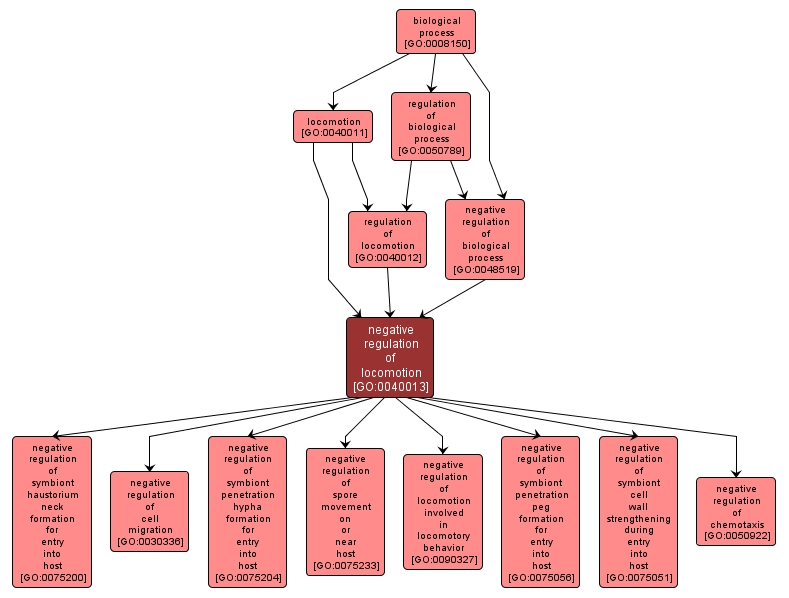GO TERM SUMMARY
|
| Name: |
negative regulation of locomotion |
| Acc: |
GO:0040013 |
| Aspect: |
Biological Process |
| Desc: |
Any process that stops, prevents or reduces the frequency, rate or extent of locomotion of a cell or organism. |
Synonyms:
- downregulation of locomotion
- down regulation of locomotion
- down-regulation of locomotion
- inhibition of locomotion
|
|

|
INTERACTIVE GO GRAPH
|














